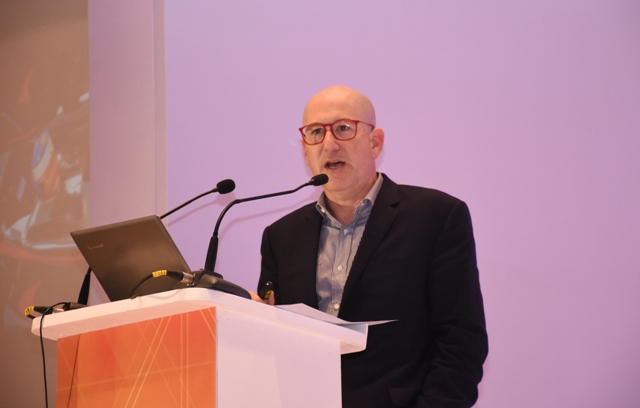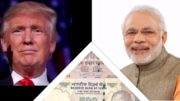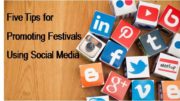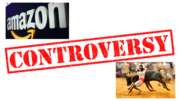Alan Vandermolen, International President, WE Communications, started his keynote address by putting forth the fact that “The job of communications is not just to manage reputation”. Today, consultancies are essentially looking at reputations, “which are sum perceptions of past performance in business, instead of looking at the current state of their business, the environment”.
So consider Formula1, he said, and technology continuously transforms F1. In the “off season” major work is done on aerodynamic chassis design, on tire technology, on fuel technology, on pit-to-driver communication, on driver-to-car communication, on car-to-driver communication and on car-to-pit communication. This continuous transformation is done by F1 teams relative to other teams…not in isolation. It is also done relative to selection of technology team members, pit crew members and driver selection. It is fine-tuned and put to the test when the season is “in motion”. Communication is at the centre, not only in the operation and innovation in the car, but the communication, operations and innovation that happens in real time.
The exact same holds true for brands in business, which have the ability to innovate, use technology to change their business models, in the real-time world. They do it, not in isolation, but within the context of their competition, and this is key to success. Technologies have enabled brands to transform entire industries. Uber, Airbnb, Alibaba, Purple Bricks provide proof of this concept.
These newly-found freedoms for brands, customers and, sometimes intermediaries between the two, have even inspired selling and buying behavior changes across categories where technology is not at the center. Tesla, for example, has turned the buying model for automobiles on its head by eliminating the dealership; in their view, an unnecessary and costly barrier between brand and consumer.
Technology and technology-inspired change have enabled brands to lower costs of sales and develop much closer and measurable, albeit transactional, relationships with customers, be they consumers or the enterprise.
“Just like F1”, he said, “at the heart of technology enabled transformation is motion”. We live in a world where brands are constantly in motion, in relation to their competitors, their customers, their employees, governments and society. As brands either seek to seize opportunity created by constant transformation or as they react to transformative pressures, they are propelled forward, they spin in place or they go backward.
Going forward is Aetna Health. In partnership with IBM, they created an EHR system to attack a fragmented market by offering a cloud solution to practice management, care coordination and population health solutions. Spinning in place is Nike+. One of the first wearables with a strong owned-platform connection, Nike+ has continued to under-deliver on its “powerful social potential”. Hurling Backwards is RIM. An early innovator and winner in the enterprise space, RIM clearly lost the pulse of the smartphone market and now Blackberry is a legacy brand.
Just as brands are in motion, so is the now vast ecosystem in which their stories live.
Tech, the mobile web, insights and analytics is allowing brands to define their destination and manage real time stories in which they act along with their stakeholders critical to their success to get there. Media platforms and social platforms are now transitioning to real time by mobile web (number of mobile subscriptions per capita, broadband penetration), he explained.
The mobile web and search are shaping a new world of branded news and information. A world where the consumers of news and information have the power to select which on-ramp to use to access content they value – on their own terms.
Social, mainstream, digital native, owned media, paid and experiential are equal partners in this media ecosystem. This ecosystem is one where analytics and insights are balanced with creative and editorial…and, an ecosystem where buying platforms increasingly bleed into the space. It is also an ecosystem where the notion of traditional influence is clashing with the new notion of influencers.
So, how do brands in motion work across a media ecosystem in motion to drive mutually-beneficial outcomes with customers and other stakeholders?
They master the art of stories in motion. Stories in Motion enables brands to create, co-create and amplify real-time and living narratives. Stories in Motion defines mutually-beneficial brand and stakeholder outcomes and puts them in motion across the entire media ecosystem. A brand that gets this is Spotify, which demonstrates a keen understanding of this concept with its “Found it First” campaign, putting the consumer in charge of discovering new artists.
But, what does this have to do with reputation?
“As modern communicators, we are responsible for propelling our employer’s brands and client’s brands forward. If our primary “fuel” is managing a lagging indicator – reputation – we are F1 drivers looking in the rear-view mirror all the time,” he pointed out.
Reputation is the “sum of perception of past performance”. We can learn from it, but we cannot move forward if managing it is our role. Managing reputation is trying to bury the past. Modern communication is about creating and living real-time narratives or Stories in Motion. Modern communication is about creating and co-creating real-time, living narratives that deliberately propel brands forward. Our fuel is content and reputation is but one “lagging indicator” that can contextualize our Stories in Motion.
“So, I suggest we slow down the talk of reputation and put a focus on content”, he recommended.
We believe that consumers of news and information place the greatest value on content that delivers a combination of meaningful brand and product information, entertainment and social good. An early adopter of QR codes, Ben and Jerry’s used them on retail packs to share nutrition and ingredient sourcing information with consumers for a powerful product and brand value advantage over other premium brands.
“When content delivers more than one kind of value and when it is leveraged across multiple platforms, the result is a Story in Motion,” said Alan.
At the heart of insights is identifying actionable nuggets of intersecting information about clients’ brands and their stakeholders.
Context captures the times and places where insights provide greatest brand and stakeholder impact. With strong insights, they use ‘context’ to map out how, where, when and why to engage in the stories already in motion – and whether a brand voice should lead or follow. So, he said that we create behavior-impacting brand experiences and work with clients to master leveraging insights and context to tell a dynamic brand story, transforming into a series cultural experiences that inspire action. Thus they develop powerful ways of engaging through paid, owned, and earned channels, with events and experiences both intimate and epic. “Our creative alters attitudes, changes behaviours and inspires people to take action,” he observed. We share, optimise and amplify creative across channels and platforms to maximise its effect – ensuring that our clients are in key impact positions to take significant roles in their own transformative storytelling journey – all the while ensuring that their critical stakeholders are brought along for the ride.
Through a continuously agile approach to measurement, we ensure that brands achieve maximum brand impact, he assured. Impact, as measured by engagement, awareness, mindshare, sentiment, tone, placement, reach and channel, is key not just at the end of a campaign, but throughout the lifecycle of brands in motion.










Be the first to comment on "Reputation in a Real-time World"